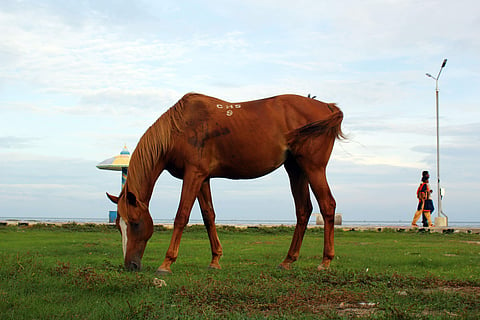

A horsepower is a unit of measurement that indicates the rate at which work is done to measure the output of a work engine. James Watt, who first used this term, considered it equivalent to the amount of power that a horse can sustain for an extended period of time.
The longer it can the greater its power. A galloping horse is synonymous with a speeding rhythm and a chained horse kicks to gather smoking dust. Between the speeding rhythm and the smoking dust lies the power of the horse which when untied generates high power and when chained generates a neigh sound only.
The educational horsepower that Higher Educational Institutions (HEIs) generate depends on their stable conditions - chained or let loose.
In the current global race for academic supremacy, the educational horses have to gallop at higher speeds to charter unexplored territories and not keep kicking in one place with their net displacement being zero. It requires policy-making of a new kind that reins in the educational horses tactfully.
There are three types of HEIs in our country - Institutions of National Importance, Institutions of Eminence and Institutions of Existence. For the first category, there are no binding statutory rules as they are created through an Act of Parliament. For the second category, though there are statutory rules, they are not applicable to them.
It is the last category that is concerning as there are only rules that manifest abundantly. While it requires only a majority in Parliament to belong to the first category and to join the second you have to be more ‘fat’ than ‘fit’ with a future plan unmindful of your present status.
The Indian higher education system is one of the largest in the world and the number of first and second categories that exist today aren't adequate for the emerging geopolitical paradigm in which India's role is increasingly significant and watched with global raptness.
If higher education has to come out of its rigid policy shell with a stentorian roar, there cannot be a time more appropriate than now. We have just begun to hear some policy sounds with substance through NEP 2020 and the policy rein-masters need to set loose healthier horses from their stables and rear the remaining for the future.
The NEP 2020 has chartered a blue-ocean pathway giving institutions the opportunity to explore uncharted territories. However, the institutional journey requires more autonomy - academic, administrative and financial - to all deserving HEIs which need to go beyond the 'Important and Eminent'.
Some of the performing 'existential' HEIs are equally important and eminent, and need to be carved out from the crowd and endowed with more freedom. It is in the comity of the collective and coherent synergy between them lies not only the overall success of NEP 2020 but also the winning strategy for the Indian higher education ecosystem in this shifting global paradigm.
For India to make a global difference, graded autonomy with a new formula must carve out these performing HEIs which are equally potent. Academic rankings and ratings are emerging as the twin towers of quality and outcome.
India's own National Institutional Ranking Framework and the NAAC/NBA have evolved over a significantly long period that the policy-makers must now rely on them to devise their carving formula.
Universities and institutions in the Top 100 NIRF Ranking as relevant (adjusted for Overall, University, Subject Category) and in the highest possible NAAC grade (A++) or NBA grade shall automatically be treated as eminent and given identical freedom. This gives an equal thrust to both rankings and ratings in the foggy race between the two.
Other accredited and reasonably ranked institutions shall be mentored and constantly reared to become eminent over a period of time. This formula shall pave the way for progressive institutional building as the nation is ready to test its Educational POKHRAN—NEP 2020.
If horses were visible symbols of wealth in medieval England, India’s educational horses are symbols of intellectual opulence. The steaming horses are ready, and it requires an equestrian policy-making that allows them to navigate all terrains to reach the final destination. In short: India’s higher education requires an equestrian policy-making to unlock its explosive academic horsepower.
(The writer is Vice-Chancellor at SASTRA Deemed-to-be-University and he can be reached at vaidhya@sastra.edu)